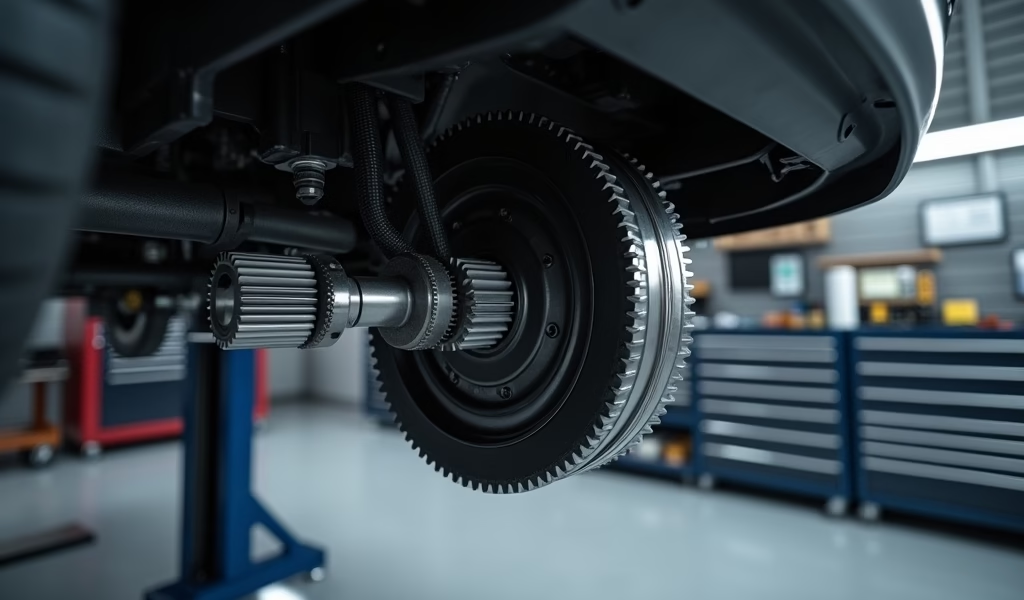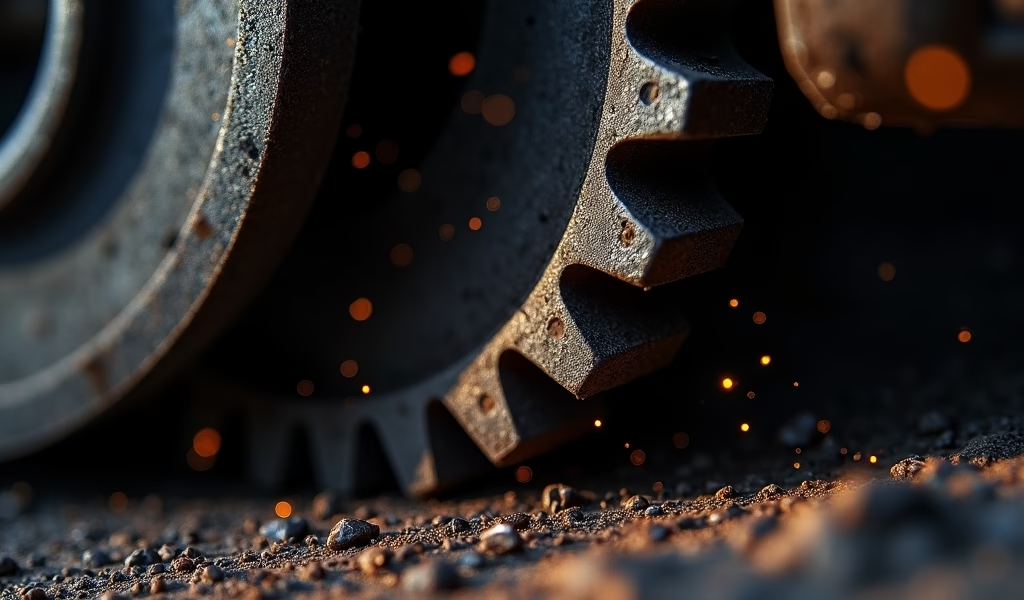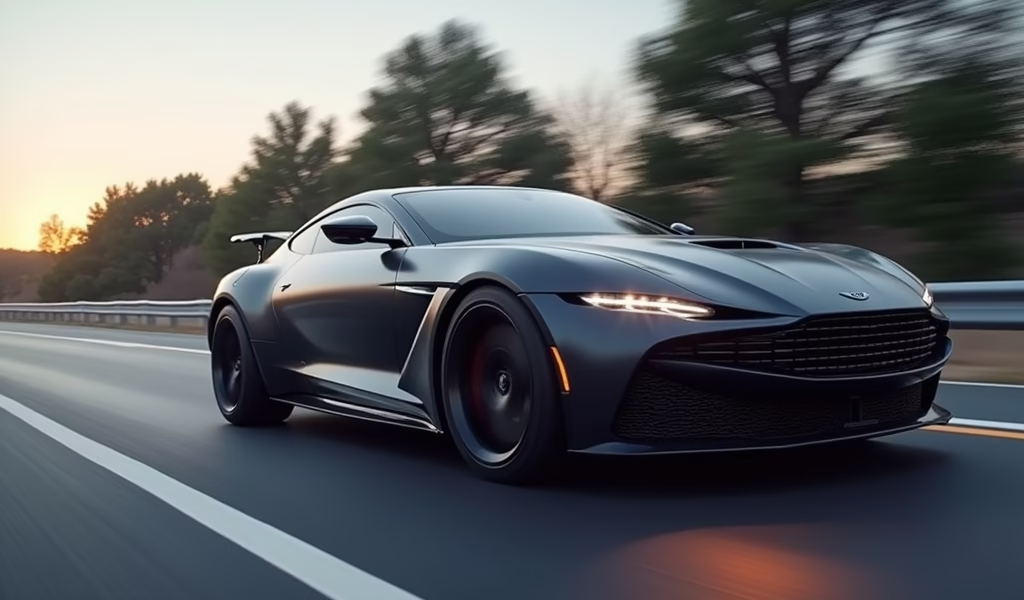Overview
This article explains that differential side gear backlash—the excessive play between side and spider gears—causes clunking noises, vibrations, and handling issues, with solutions ranging from replacing thrust washers to complete differential rebuilds. Regular maintenance with proper fluid changes can prevent backlash problems, while repairs can be done DIY with specialized tools or by professionals, with costs varying from $300 for simple fixes to $2,500 for complete rebuilds.
Table of Contents
- Understanding Differential Side Gear Backlash
- Causes of Differential Side Gear Backlash
- Symptoms of Excessive Side Gear Backlash
- Measuring Differential Side Gear Backlash
- Five Effective Fixes for Side Gear Backlash
- DIY or Professional Repair?
- Preventive Maintenance Tips
- Conclusion
- Frequently Asked Questions
Understanding Differential Side Gear Backlash
When it comes to differential side gear backlash, think of it as the automotive equivalent of a loose tooth – it might not hurt immediately, but ignore it long enough and you’re in for a world of trouble. This play or clearance between the side gears and spider gears in your differential might seem insignificant, but it’s actually critical to your vehicle’s performance and longevity.
In simple terms, differential side gear backlash is the small amount of movement that exists before the gears actually engage and transmit power. While a certain amount of backlash is necessary (like breathing room for your differential to function properly), excessive backlash is like giving your gears too much elbow room at the dinner table – things get messy.
Your differential is the unsung hero of your drivetrain, allowing your wheels to rotate at different speeds when turning corners. The side gears are connected to your axles, working with the spider gears to make this differential rotation possible. When everything’s in harmony, you get smooth cornering and efficient power transfer. But when backlash enters the picture uninvited, your differential starts sending you SOS signals you shouldn’t ignore.
Modern vehicles with limited-slip or locking differentials are particularly sensitive to proper backlash settings. According to research from the Society of Automotive Engineers, even small deviations from manufacturer specifications can reduce efficiency by up to 15% and accelerate wear patterns dramatically.
Causes of Differential Side Gear Backlash
Excessive differential side gear backlash doesn’t just appear out of nowhere – it’s typically the result of wear and tear mounting a slow but persistent campaign against your differential components. Let’s look at the usual suspects:
Worn thrust washers are often the primary culprits. These thin spacers provide the proper spacing between gears, and when they wear down (which they inevitably do), they create extra space for movement. It’s like wearing down the soles of your favorite shoes – suddenly you’ve got more wiggle room than you should.
Side gear wear itself is another common cause. After thousands of miles transferring all that torque, the gear teeth start to show their age. The once precise gear mesh begins to loosen, much like how puzzle pieces don’t fit quite as snugly after years of use.
Spider gear damage also contributes significantly to backlash issues. These cross-shaped gears can develop wear patterns or even broken teeth after years of service or a particularly harsh driving incident. When they’re compromised, the whole differential orchestra plays out of tune.
Improper initial setup during previous repairs can haunt your differential for years. This is why proper ring and pinion backlash adjustment is so crucial during any differential work. Precision matters tremendously in differential assembly – we’re talking thousandths of an inch making the difference between smooth operation and premature failure.
Age and high mileage simply take their toll. Even with perfect maintenance, differential components have a finite lifespan. The constant heating and cooling cycles, pressure changes, and mechanical stress gradually alter tolerances that were once factory-perfect.

Symptoms of Excessive Side Gear Backlash
Your vehicle has a way of speaking to you when differential side gear backlash becomes excessive – it’s just a matter of learning its language. The most common complaint is a distinctive “clunk” or “knock” sound when changing direction. Imagine shifting from drive to reverse while barely moving and hearing a solid “thunk” – that’s your differential announcing its backlash problem loud and clear.
Vibrations during acceleration often accompany backlash issues. These vibrations typically feel different from tire balance problems – they’re more pronounced during power application and may seem to come from underneath rather than through the steering wheel. It’s as if your drivetrain is doing a little shimmy it wasn’t designed to perform.
Difficulty engaging gears smoothly can also signal excessive backlash. The transition between power states becomes less predictable, similar to trying to shake hands with someone who keeps moving their hand position – eventually you connect, but not without some awkwardness.
Pay attention to handling changes too. Excessive backlash can create momentary power interruptions during cornering, especially in vehicles with limited-slip differentials. This might manifest as a slight hesitation or unexpected weight transfer mid-corner.
Perhaps most telling is the rhythmic clunking during low-speed turns. This occurs as the backlash gap is repeatedly opened and closed while the differential does its job of allowing different wheel speeds. It’s like hearing the mechanical equivalent of someone nervously tapping their foot – regular, persistent, and increasingly annoying.
Measuring Differential Side Gear Backlash
Before attempting any fixes, it’s crucial to properly measure the differential side gear backlash to confirm your diagnosis. This process isn’t as intimidating as it might sound, though it does require some specialized tools and a methodical approach.
First, you’ll need access to the differential – this typically means putting your vehicle on jack stands or a lift and removing the differential cover. Safety first: always ensure your vehicle is properly supported and the transmission is in neutral before beginning work.
The most accurate way to measure side gear backlash is using a dial indicator, a tool that precisely measures small movements. Mount it so the plunger contacts one of the side gears or the axle shaft, then:
- Hold one axle shaft stationary (you may need a helper for this)
- Rotate the other axle shaft back and forth gently, observing the dial indicator
- The total movement shown on the dial is your backlash measurement
- Compare this reading to your vehicle’s specifications (typically found in the service manual)
For most passenger vehicles, the acceptable side gear backlash range is between 0.005 and 0.015 inches. Performance differentials or heavy-duty applications may have different specifications, so always check the manufacturer’s recommendations for your specific vehicle model.
If you don’t have access to a dial indicator, there’s a more rudimentary method: mark both axle shafts in relation to a fixed point, then check how far you can rotate one while holding the other stationary. While less precise, this can give you a general idea if excessive movement exists.
Remember that some backlash is normal and necessary – zero backlash would actually cause binding and accelerated wear. The goal is to have the Goldilocks amount – not too much, not too little, but just right for your differential to function properly.
Five Effective Fixes for Side Gear Backlash
When tackling differential side gear backlash, you have several effective repair options. The best choice depends on your comfort level with differential work, your budget, and the severity of the issue. Let’s explore the five most reliable fixes, starting with the simplest and progressing to more comprehensive solutions:
1. Replace the thrust washers
Often, worn thrust washers are the primary cause of excessive backlash. These thin spacers establish proper clearance between the side gears and case. Replacing them is relatively straightforward and cost-effective – like replacing the worn insoles in your shoes rather than buying an entirely new pair. New thrust washers can restore proper spacing and eliminate much of the problematic movement.
During this repair, carefully measure the existing washers and compare them to new ones to understand how much wear has occurred. Some differentials allow for various thicknesses of thrust washers, enabling you to dial in the perfect amount of backlash. This approach works best when the side gears and spider gears remain in good condition.
2. Install selective shims
For differentials that use shims rather than (or in addition to) thrust washers, installing precisely selected shims can eliminate excessive backlash. This method provides exceptional precision – you’re essentially custom-tailoring your differential’s internal clearances.
Shim kits are available for many popular differentials, offering various thicknesses that allow for fine-tuning. The process involves:
- Measuring the existing backlash
- Calculating the required shim thickness
- Installing appropriately sized shims
- Re-measuring to verify correct backlash
This approach requires patience and attention to detail but offers excellent results without replacing major components. The precision afforded by proper differential carrier bearing preload and shimming can transform a clunky differential into a smooth operator.
3. Replace side gears and spider gears
When wear extends beyond the thrust washers to the gears themselves, replacing the complete gear set becomes necessary. Think of this as replacing worn gears in a watch – you’re addressing the heart of the mechanism.
This more involved repair requires disassembling the differential case and installing new side gears and spider gears. While more expensive than simply replacing washers, it addresses the wear patterns that have developed on the gear teeth themselves. For vehicles with significant mileage or those used in demanding conditions, this often provides the most lasting solution.
Quality matters tremendously here – as lubrication experts point out, premium replacement gears with proper hardening and machining tolerances can outlast inferior parts by factors of 2-3 times under identical conditions.
4. Install a limited-slip differential conversion
For vehicles currently equipped with open differentials, installing a limited-slip differential (LSD) not only fixes backlash issues but upgrades performance. This is like replacing a basic appliance with a professional-grade model – you’re addressing the immediate problem while gaining additional benefits.
Limited-slip differentials are designed with tighter tolerances and often incorporate clutch packs or other mechanisms to control gear movement. They provide better traction and handling while eliminating the annoying symptoms of backlash. For performance-oriented drivers, this “problem” might be the perfect excuse for that differential upgrade you’ve been contemplating.
5. Complete differential rebuild
Sometimes, the most thorough approach is the wisest investment. A complete differential rebuild addresses everything: bearings, seals, gears, and the case itself. It’s the differential equivalent of a clean slate.
During a rebuild, a skilled technician inspects every component, replaces worn parts, and reassembles everything to factory specifications. This approach makes particular sense for:
- High-mileage vehicles where multiple components show wear
- Off-road or performance vehicles subjected to extreme conditions
- Cases where fluid contamination (such as metal particles) indicates widespread wear
- Situations where other repairs have failed to resolve the issue
While this represents the highest initial cost, a properly rebuilt differential often provides years of trouble-free service, making it economical in the long run.

DIY or Professional Repair?
Now for the million-dollar question: should you tackle differential side gear backlash yourself or leave it to the professionals? Let’s be honest about what you’re getting into either way.
DIY differential work can be immensely satisfying and save you significant labor costs. If you’re mechanically inclined with a well-equipped garage, replacing thrust washers or even a complete gear set is within reach. It’s like making a soufflé – intimidating at first glance, but manageable with the right tools and instructions.
However, differential work requires specialized tools that most home mechanics don’t have lying around. You’ll need at minimum:
- A dial indicator for precise measurements
- Bearing pullers for removing and installing bearings
- A torque wrench capable of high-precision settings
- Specialized shim packs or thrust washers
Beyond tools, the expertise factor cannot be overlooked. Differentials operate with clearances measured in thousandths of an inch. A professional differential specialist has likely rebuilt hundreds of units and developed an intuitive feel for proper adjustment that’s difficult to replicate on your first attempt.
Consider your vehicle’s value and purpose too. For a weekend cruiser or project car, the learning experience might justify the risk of DIY. For your daily driver or a high-performance vehicle, the peace of mind that comes with professional installation might be well worth the labor cost.
If you choose the professional route, seek out a shop that specializes in drivetrain work rather than a general repair facility. As industry experts consistently report, specialized repair facilities typically achieve significantly lower comeback rates on complex drivetrain repairs compared to general service centers.
Preventive Maintenance Tips
An ounce of prevention is worth a pound of cure, especially when it comes to your differential. These preventive steps can help you avoid side gear backlash problems before they start:
Regular differential fluid changes are your first line of defense. Fresh, clean fluid maintains proper lubrication and helps dissipate heat, dramatically slowing wear patterns. Most manufacturers recommend changing differential fluid every 30,000-50,000 miles, but check your specific vehicle’s maintenance schedule.
Choose the right fluid for your differential type. Limited-slip differentials often require special additives or specific fluid formulations. Using the wrong type is like putting diesel in a gasoline engine – technically a fluid, but not the right one for the job.
Listen for early warning signs. That slight clunk when shifting from drive to reverse might be easy to ignore now, but addressing it early can prevent more extensive damage. Your differential will whisper before it screams – learn to hear those whispers.
Consider your driving habits. Frequent towing, aggressive driving, or off-roading accelerates differential wear. If these activities are part of your regular driving pattern, consider shortening your maintenance intervals and investing in premium components when repairs become necessary.
Perform regular inspections of differential seals and the housing itself. Leaks not only reduce fluid levels but can introduce contaminants that accelerate wear. A simple visual check during oil changes can catch potential issues before they become serious.
For performance vehicles, consider upgrading to a stronger differential before problems develop. It’s like choosing reinforced hiking boots before tackling a challenging trail – an upfront investment that can prevent problems when you’re far from help.
Conclusion
Differential side gear backlash may sound like intimidating technical jargon, but it’s really just about keeping your vehicle’s wheels turning smoothly and quietly. Those clunks, vibrations, and handling issues aren’t just annoying – they’re your car’s way of asking for attention before more serious problems develop.
Whether you opt for the simpler fixes like replacing thrust washers, go for a complete gear replacement, or use this opportunity to upgrade to a limited-slip differential, addressing backlash issues promptly will save you from more expensive repairs down the road.
Remember that proper differential maintenance is surprisingly simple: regular fluid changes with the correct specification fluid, paying attention to early warning signs, and considering how you use your vehicle. These basic practices can dramatically extend the life of your differential components.
If you’re mechanically inclined, differential work can be a rewarding DIY project that deepens your understanding of your vehicle. If not, finding a qualified drivetrain specialist will ensure the job is done right the first time.
Your differential works tirelessly to transfer power while allowing your wheels to turn at different speeds – giving it the care it deserves will keep your drives smooth, quiet, and trouble-free for many miles to come.
Frequently Asked Questions
What exactly is differential side gear backlash?
Differential side gear backlash is the clearance or play between the side gears and spider gears in your differential. A small amount is normal and necessary for proper operation, but excessive backlash causes clunking and accelerated wear.
How much does it cost to fix differential side gear backlash?
Repair costs range from $300-500 for thrust washer replacement to $1,000-2,500 for a complete differential rebuild. The exact price depends on your vehicle make, repair method, and whether you choose DIY or professional installation.
Can I drive with differential side gear backlash?
While you can technically drive with minor backlash, it will progressively worsen and potentially cause catastrophic failure. Consider it a ticking time bomb that should be addressed promptly to avoid being stranded.
How long does a differential repair typically last?
A properly performed differential repair should last 100,000+ miles under normal driving conditions. Quality of parts, driving habits, and maintenance all affect longevity significantly.
Will differential backlash affect my fuel economy?
Yes, excessive backlash creates inefficiencies in power transfer that can reduce fuel economy by 3-7%. The inconsistent power delivery forces your engine to work harder to maintain speed, consuming more fuel.

